Welcome to the 2nd issue of the Pipeline Technology Journal in 2024 which is addressing aspects of the climate emergency and the role the pipeline industry can play. As an integral part of the advancing global energy transition, it is expected to supply cleaner, more sustainable yet affordable energy in the near future. An emphasis on…
Articles
English

Editorial: The Pipeline Industry in a Changing Energy Landscape
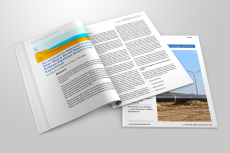
An Innovative Approach to Optimize Near Shore Burial Requirements of Subsea Pipelines Based on Field Experience
Subsea pipelines originating from offshore fields and approaching land are required to be buried in near shore area to provide protection against environmental loading, marine activity, instability and unfavourable soil conditions.This paper presents an innovative approach to optimize near shore burial requirements of subsea pipelines. This…

Crucial Challenges in the Design of CO2 Pipeline Clusters
Carbon capture and storage (CCS) plays a critical role in meeting global net-zero targets. Pipeline clusters are under development to transport carbon dioxide (CO2) from disparate emitters to a common injection site. Design requirements vary depending on system configuration and transport phase (gas versus dense). Examples are:Diverse industries…
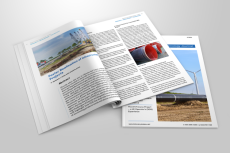
Faster Realization of Infrastructure Projects
Shortly after the war in Ukraine had begun, it became clear that Germany needed to diversify its sources of natural gas supply to reduce its dependency and ensure its national energy security. The import of liquefied natural gas (LNG) through the Wilhelmshaven port required a strong connection to the national gas transmission network. OGE had to…
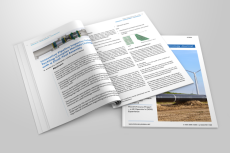
Innovative Pipeline Inspection Technique: Tackling Complex Manifold Challenges with a Dual-Tool Assembly
Intero Integrity Services was tasked by a prominent energy company with inspecting a 36" pipeline in 2023, which included a challenging manifold inspection. The challenge stemmed from a manifold featuring six large-diameter take-offs, posing a significant obstacle for standard bidirectional pigs and inspection tools.Following successful…

Overcoming data access challenges to provide an effective leak detection system
As pipeline industry challenges continue to grow, it’s never been more important to make maximum use of the data available for leak detection. Crucial to this is the deployment of hardware that allows pipeline operators to access more data, resulting in a more effective leak detection system.In this article, Sales and Senior Research Engineer…
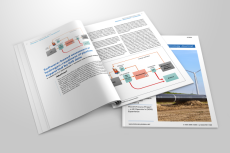
Software-based assessment of hydrogen-readiness of pipelines supported by GIS data
This article describes an approach to the assessment of steel pipelines regarding their potential suitability for hydrogen transportation. The assessment is made based on pipeline inventory data available in georeferenced form in a GIS, as well as in supplementary databases, and uses the software platform trascue. PIMS by GEOMAGIC GmbH, combined…

The LTS Futures Project – a UK Operator’s (SGN) Experience of Assessing the Feasibility of Repurposing their Natural Gas Transmission System to Transport Hydrogen
The Local Transmission System (LTS) is the backbone of the United Kingdom (UK) energy network, delivering natural gas from the National Transmission System (NTS) to towns and cities across the country.The four Gas Distribution Networks (GDNs) operate approximately 11,000 km of high-pressure pipelines, operating at pressures above 7 barg. The…
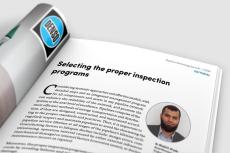
Editorial: Selecting the proper inspection programs
Considering systemic approaches and effective models, with detailed steps and an integrated management program for all components and assets in any pipeline network can enhance the reliability of the network, and promote the system to the next level of excellence. Pipelines comprise of the most efficient methods of energy transportation and…

How to see what cannot be seen within a Disastrous, Highly Corroded Subsea Gas Pipeline during Repair and Pre- Commissioning Process
Repairing a subsea pipeline has its own special challenges. It goes from levelling the pipeline inner pressure with seabed pressure at depth of damage, to cutting the line, installation of smart flanges and spool pieces, and finally going through pre-commissioning steps and miscellaneous pigging operations. During all these steps, it is inevitable…
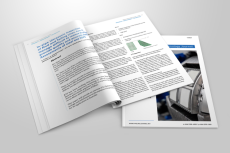
In-pipe Ultrasonic Inspections of Mud and Tailing Lines: how to manage difficult to remove Scaling, provide quality and accurate Defect Assessments of steel and HDPE
Rio Tinto Yarwun Aluminium Refinery (RTY) is expanding its pipeline integrity assessment technologies. As part of this effort, RTY has been working with Intero Integrity Services (Intero) to introduce Intero’s Pipeline Surveyor services, a free-swimming pipe inspection tool.Rio Tinto is one of the world's largest mining companies, operating in 25…

ptj Insights - Defects in Pipelines and their Assessment
There are over 4 million kilometres of transmission pipelines transporting crude oil and its products, and natural gases around the World. These costly and valuable, but potentially hazardous, assets are ageing,with most over, or approaching, 50 years old. This ageing can cause defects such as corrosion in the pipelines, but the good news is that…
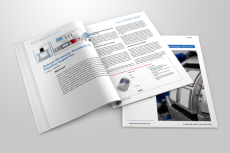
Robust Ultrasonic Transducers for Pipeline Inspection
Pipeline inspection for cracks and corrosion through intelligent inline tools relies on ultrasonic probes, demanding a 100% first-run success rate to minimize costs. These probes face harsh environmental conditions within pipelines, necessitating utmost stability for optimal functionality. Material selection and rigorous testing during development…
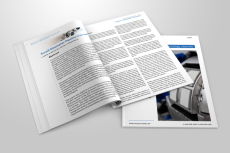
Small Diameter Pipeline Inspection
Conventional tools for inspecting pipelines have historically been designed for long length, larger diameter transmission lines, typically up to 48 inches. Correspondingly, pipeline inspection gauges (PIGs) designed to inspect these pipelines have comparable diameters and consist of multiple carriages equipped with diverse inspection tools, logic…

The Challenge of an All-In-One Inspection - First Results and Benefits
For more than 5 years TRAPIL, a pipeline operator has researched an inspection tool that would allow, in a single run, the detection, location, identification and sizing of dents, metal losses and crack anomalies (axial and circumferential) affecting liquid product pipelines. The search for an “all-in-one” tool would generate gains in terms…
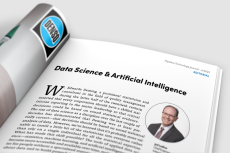
Editorial: Data Science & Artificial Intelligence
W. Edwards Deming, a prominent statistician and consultant in the field of quality management during the latter half of the twentieth century, asserted that every corporation should have a skilled statistician reporting to the senior leadership so that critical decisions could be based on sound statistical evidence. The rise of data science as a…
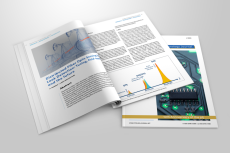
Distributed Fiber Optic Sensing for Leak Detection: Tuning, field-testing and the future
Distributed Fiber Optic Sensing is a highly sensitive technology for leak detection that can provide rapid detection and precise locating of small leaks. The evidence from field trials and real-world leaks is becoming increasingly available and more and more pipelines are implementing the technology for leak detection. Under controlled testing, it…

Enhancing External Corrosion Direct Assessment With Machine Learning
Operators need to keep their pipelines fit for purpose, maximize life and control costs. External corrosion is one of the main threats faced by operators, costing millions annually in identification, mitigation and repair. Although many methods exist to model the growth of corrosion features, the situation is often most complicated for “unpiggable…
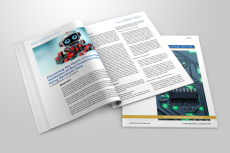
Mastering the Match: A Comprehensive Validation of Run Comparison Software Using Synthetic Data
This study rigorously validates run comparison (RC) software, essential for accurate corrosion growth rate assessments in pipelines, using an extensive synthetic dataset and an experimental K-nearest neighbours-based algorithm across 2,000 diverse spools. Detailed within the paper are the synthetic data generation, in-line inspection (ILI) run…
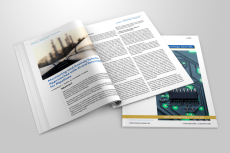
Monitoring and Anomaly Detection Approaches with AI and Data Analytics for Pipelines
Effective monitoring and anomaly detection are fundamental prerequisites for safeguarding the efficiency, integrity and reliability of pipeline systems. Here, we explore both physics-based and machine-learning approaches for operational asset monitoring and anomaly detection, as well as evaluate their performance and appropriateness across a…
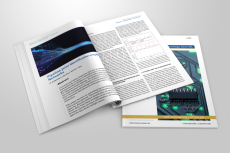
Pipeline Joint Identification using Neural Networks
Conventional inline inspection (ILI) tools use odometer wheels to determine the location of identified defects. On top of that, above ground markers (AGMs) are used to confirm and potentially correct for odometer wheel slippage. Free-floating unconventional ILI tools use information from a variety of sensors to accurately locate defects.…
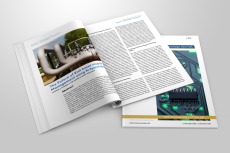
The Future of Risk based Integrity Management using AI Approaches
Pipeline Integrity Management Systems (PIMS) have significantly improved the safety of pipelines in Europe and the United States. New technologies such as artificial intelligence (AI) and modern Geographic Information System (GIS) visualization can and will elevate pipeline integrity to a new level. However, challenges for pipeline integrity have…

Toward AI Data-Driven Pipeline Monitoring Systems
This work focuses on the application of artificial intelligence methods to enhance pipeline monitoring systems, specifically Third-Party Interference (TPI) and leak detection. A critical aspect of pipeline monitoring revolves around determining the operational state of the pipeline. This is paramount because the processing algorithms are…
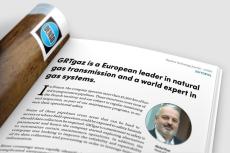
Editorial: GRTgaz is a European leader in natural gas transmission and a world expert in gas systems.
In France, the company operates more than 32,500 km of buried transportation pipelines. These structures cover most of the French territory and are subject to regular monitoring and inspection, as part of our maintenance programs, to ensure their operational safety.Some of these pipelines cross areas that can be hard to access or where field…
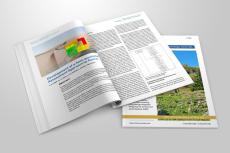
Development of a Semi-quantitative Risk Assessment Approach for Pipelines
Pipelines are typically designed using different practices and codes than in-plant piping. While Risk-based Inspection (RBI) quantitative methodologies have evolved and been applied for in-plant piping, e.g. API RP 581, limited methodology framework has been specified and widely used for pipelines, in a similar approach.Alternatively, for…
